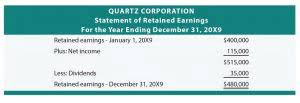
The Gross Margin is a profitability ratio that measures the percentage of revenue remaining after deducting the cost of goods sold (COGS) incurred in the period. The gross profit method is an important concept because it shows management and investors how efficiently the business can produce and sell products. That is why it is almost always listed on front page of the income statement in one form or another. Let’s take a look at how to calculate gross profit and what it’s used for. Determining gross margin is an easy and straightforward way to understand the core elements of a business.
- The $0.80 is your COGS, which is what it costs to make or produce your goods and services.
- After almost a decade of experience in public accounting, he created MyAccountingCourse.com to help people learn accounting & finance, pass the CPA exam, and start their career.
- Using these figures, we can calculate the gross profit for each company by subtracting COGS from revenue.
- Service-based industries tend to have higher gross margins and gross profit margins because they don’t have large amounts of COGS.
How to Forecast Gross Profit?
An alternative approach is to subtract the gross margin from one to arrive at the COGS margin, i.e. Unlike software and related services — which represent sources of recurring revenue — hardware products are one-time purchases. But before any comparisons can be made, the gross profit must be standardized by dividing the metric by revenue.
Gross Profit for New Companies
It ensures your business decisions are data-driven and focused on profitability. The difference between the gross margin and net profit margin pertains to the type of expenses deducted from the profit metric. The formula to calculate the gross margin is equal to gross profit divided by net revenue.
- Also, in the same period, the cost of revenue for products and services and another dept. is $16273 million and $26,637 million, respectively.
- It does not include operating expenses such as sales, marketing costs, taxes, or loan interest.
- The company’s bottom line is important for investors, creditors, and business decision makers alike.
- Pay attention to the price, and buy in bulk when prices are low or supplies are on sale.
- As Microsoft Inc. and Apple Inc. are in similar fields, we would be able to compare these companies.
Gross Profit vs. Gross Profit Margin
A company’s operating margin equals operating income divided by net sales. This is used to show how much revenue is left over after paying variable costs such as wages and raw materials. It is the same as the company’s return on sales, and indicates how well that return is being managed. A higher contribution margin is usually better, and more money is available for fixed expenses. However, some companies may prefer to have a lower contribution margin. Although the company has less residual profit per unit after all variable costs are incurred, these companies may have little to no fixed costs.
Gross Margin vs. Net Profit Margin: What is the Difference?
The gross margin is an easy, straightforward calculation that provides insights into profitability and performance. Past performance, while not an infallible predictor, offers invaluable insights. By delving into historical data, businesses can trace the trajectory of their gross margin. The skeletal framework of a company’s expenses, or its cost structure, plays a pivotal role in shaping gross margin.
Based on this information, it’s safe to say PG’s gross margin is relatively solid. Below is a real-life example calculation using the income statement from Procter and Gamble’s (PG) latest 10-Q filing. 11 Financial is contribution margin income statement a registered investment adviser located in Lufkin, Texas. 11 Financial may only transact business in those states in which it is registered, or qualifies for an exemption or exclusion from registration requirements.

Would you prefer to work with a financial professional remotely or in-person?
Every successful business keeps its costs below revenue to generate profits. One way to measure a company’s profitability is to calculate its gross margin, which is the percentage of revenue it retains after subtracting the costs directly related to the sale of goods or services. It is similar to gross profit margin, but it includes the carrying cost of inventory. Two companies with similar gross profit margins could have drastically different adjusted gross margins depending on the expenses that they incur to transport, insure, and store inventory. A high gross profit margin means that the company did well in managing its cost of sales. It also shows that the company has more to cover for operating, financing, and other costs.

Premium Investing Services
Gross profit margin for Apple in 2017:

Leave a Reply